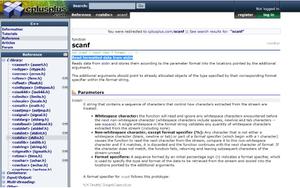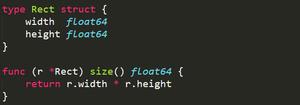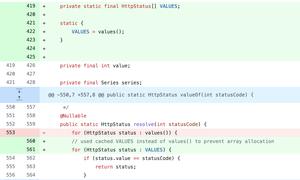Java语言实现二叉堆的打印代码分享
二叉堆是一种特殊的堆,二叉堆是完全二元树(二叉树)或者是近似完全二元树(二叉树)。二叉堆有两种:最大堆和最小堆。最大堆:父结点的键值总是大于或等于任何一个子节点的键值;最小堆:父结点的键值总是小于或等于任何一个子节点的键值。
打印二叉堆:利用层级关系

我这里是先将堆排序,然后在sort里执行了打印堆的方法printAsTree()
public class MaxHeap<T extends Comparable<? super T>> {
private T[] data;
private int size;
private int capacity;
public MaxHeap(int capacity) {
this.capacity = capacity;
this.size = 0;
this.data = (T[]) new Comparable[capacity + 1];
}
public MaxHeap(T[] arr) {//heapify,数组建堆
capacity = arr.length;
data = (T[]) new Comparable[capacity + 1];
System.arraycopy(arr, 0, data, 1, arr.length);
size = arr.length;
for (int i = size / 2; i >= 1; i--) {
shiftDown(i);
}
}
public int size() {
return this.size;
}
public int getCapacity() {
return this.capacity;
}
public boolean isEmpty() {
return size == 0;
}
public T seekMax() {
return data[1];
}
public void swap(int i, int j) {
if (i != j) {
T temp = data[i];
data[i] = data[j];
data[j] = temp;
}
}
public void insert(T item) {
size++;
data[size] = item;
shiftUp(size);
}
public T popMax() {
swap(1, size--);
shiftDown(1);
return data[size + 1];
}
public void shiftUp(int child) {
while (child > 1 && data[child].compareTo(data[child / 2]) > 0) {
swap(child, child / 2);
child /= 2;
}
}
/**
* @param a data数组中某个元素的下角标
* @param b data数组中某个元素的下角标
* @return 哪个元素大就返回哪个的下角标
*/
private int max(int a, int b) {
if (data[a].compareTo(data[b]) < 0) {//如果data[b]大
return b;//返回b
} else {//如果data[a]大
return a;//返回a
}
}
/**
* @param a data数组中某个元素的下角标
* @param b data数组中某个元素的下角标
* @param c data数组中某个元素的下角标
* @return 哪个元素大就返回哪个的下角标
*/
private int max(int a, int b, int c) {
int biggest = max(a, b);
biggest = max(biggest, c);
return biggest;
}
public void shiftDown(int father) {
while (true) {
int lchild = father * 2;
int rchild = father * 2 + 1;
int newFather = father;//这里赋不赋值无所谓,如果把下面这个return改成break,那就必须赋值了
if (lchild > size) {//如果没有左、右孩子
return;
} else if (rchild > size) {//如果没有右孩子
newFather = max(father, lchild);
} else {//如果有左、右孩子
newFather = max(father, lchild, rchild);
}
if (newFather == father) {//如果原父结点就是三者最大,则不用继续整理堆了
return;
} else {//父节点不是最大,则把大的孩子交换上来,然后继续往下堆调整,直到满足大根堆为止
swap(newFather, father);
father = newFather;//相当于继续shiftDown(newFather)。假如newFather原来是father的左孩子,那就相当于shiftDown(2*father)
}
}
}
public static <T extends Comparable<? super T>> void sort(T[] arr) {
int len = arr.length;
MaxHeap<T> maxHeap = new MaxHeap<>(arr);
maxHeap.printAsTree();
for (int i = len - 1; i >= 0; i--) {
arr[i] = maxHeap.popMax();
}
}
public static void printArr(Object[] arr) {
for (Object o : arr) {
System.out.print(o);
System.out.print("\t");
}
System.out.println();
}
public void printSpace(int n) {//打印n个空格(在这里用‘\t'来代替)
for (int i = 0; i < n; i++) {
System.out.printf("%3s", "");
}
}
public void printAsTree() {
int lineNum = 1;//首先遍历第一行
int lines = (int) (Math.log(size) / Math.log(2)) + 1;//lines是堆的层数
int spaceNum = (int) (Math.pow(2, lines) - 1);
for (int i = 1; i <= size; ) { //因为在[1...size]左闭右闭区间存数据,data[0]不存数据
//每层都是打印这个区间[2^(层数-1) ... (2^层数)-1]。如果堆里的数不够(2^层数)-1个,那就打印到size。所以取min((2^层数)-1,size).
for (int j = (int) Math.pow(2, lineNum - 1); j <= Math.min(size, (int) Math.pow(2, lineNum) - 1); j++) {
printSpace(spaceNum); //打印spaceNum个空格
System.out.printf("%3s", data[j]);//打印数据
System.out.printf("%3s", "");//图片中绿色方框
printSpace(spaceNum);//打印spaceNum个空格
i++;//每打印一个元素就 + 1
}
lineNum++;
spaceNum = spaceNum / 2;
System.out.println();
}
}
public static void main(String args[]) {
Integer[] arr = {3, 5, 1, 7, 2, 9, 8, 0, 4, 6, 1, 3, 6, 1, 1};
sort(arr);
}
}
执行结果:

总结
以上就是本文关于Java语言实现二叉堆的打印代码分享的全部内容,希望对大家有所帮助。感兴趣的朋友可以继续参阅本站其他相关专题,如有不足之处,欢迎留言指出。感谢朋友们对本站的支持!
以上是 Java语言实现二叉堆的打印代码分享 的全部内容, 来源链接: utcz.com/p/215025.html








